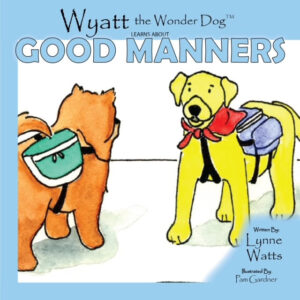Teaching Kids How to Handle Emotions
How to Teach Kids about Emotions
Just as children need to learn their colors, letters and numbers, they also need to learn how to identify and express their emotions. Parents and educators often focus on the former and ignore the latter.
How often do you hear an adult quizzing a children on colors or recognizing the letters in their name?
How often do you hear them ask a child to identify how they or someone else is feeling?
See what I mean?
It’s not that we don’t think it’s important… it’s one of the many sides of the emotional/behavioral equation that we expect children to ‘just get it’ without specifically teaching them the different nuances of feelings and what to do about them. We wouldn’t expect a child to just naturally know the color blue or yellow without being taught, right? So why would we expect that they would know how to recognize, name and cope with feelings without being taught?
If we teach children anything, we often teach them to ignore and stuff negative feelings while promoting positive feelings. We distract or redirect. I know we think we are doing them a favor when we do this, but without the negative feelings, we can’t truly enjoy and appreciate the positive ones. This is why school counselors regularly include lessons on identifying feelings and handling negative ones in productive ways.
Here are some resources to train kids to recognize and handle feelings:
Be Aware-the first step in helping children understand feelings is to increase awareness. Point out their feelings and those of others.
- “I see you are angry because you are talking really loud and pointing your finger at your sister. “
- “I see a big smile on your face. Going to the park really makes you happy doesn’t it?”
Teach Coping Skills–teach children that all feelings are okay, but all the choices we make to act out our feelings are not okay. It is their job to make reasonable decisions about how to express their feelings.
- “Being angry with your sister because she took your toy is okay. Grabbing the toy back and hitting her is not.”
- “Feeling excited about going to the park is okay. Jumping on the couch because you are excited is not.”
Teach Positive Behavior–Be sure to teach children what is acceptable in addition to what is not acceptable. Simply sending a child to timeout without being clear about alternative behaviors does not correct the problem in the future. If necessary, you may have to suggest some possibilities initially.
- “I know that you were mad when your sister took your toy away but grabbing the toy back is not okay. Instead you need to tell her how you feel and ask for the toy back.”
- “I know you are excited about going to the park but jumping on the couch tears up the couch. What else could you do when you are excited?”
Understanding their own feelings, both positive and negative, and relating to the feelings of others is critical for personal well being and building relationships. It’s also the foundation for empathy when others express feelings. One great way to teach about emotions without waiting until you are in the midst of an emotional breakdown, is to read books or watch movies and then ask:
How did the main character feel in the story?
How did they act out that feeling?
Was there a better way to express their feeling?
What was the consequence of expressing their feeling in that way?
Here’s a good book to start with:
School Counselor Resource for Teaching Feelings and
The I Statement
Wyatt Learns about Good Manners

Wyatt is always wondering about something and lately it is how to get his friend, Max to change his bossy ways. What can he do? Join Wyatt as he considers some rather unusual options until he finally discovers that a heart to heart talk with Max can create a new friendship with an old friend.
Have you ever had a friend that did some things that you disagreed with? Wyatt does and he doesn’t know what to do about it. Join Wyatt as he learns that being honest with his friend is the best and only way to solve the problem. A great story!
~Lynn Hughes M.Ed. professional school counselor, Ball Ground Elementary
Wyatt the Wonder Dog: Learns About Good Manners
School counselor lesson plan and activities to expand the lesson in the book:
Wyatt Learns about Good Manners Lesson plan
